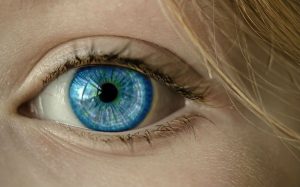What Your Eyes Reveal About Your Health

They say that the eyes are the windows to the soul. The eyes are, in fact, very revealing, especially in terms of one’s health. Iridology and Sclerology are both sciences dedicated to studying the eyes and the markings within them, in order to determine health weaknesses and strengths.
Below, we will define iridology and sclerology, provide an iridology history and outline the benefits that can come from studying your eyes. Your eyes can provide you with an accurate insight about your overall health and pre-existing conditions. Find out what your eyes are telling you!
What is Iridology?
An Iridology exam analyzes the iris, or the colored portion, of the eye. The nerves that travel throughout the body and come up to the brain extend out, via the optic nerve, to reflect in the iris. Therefore, the colors, fiber structure, and other markings are actually providing nerve feedback from the whole body to indicate what weaknesses you’ve been predisposed to genetically. This is extremely helpful information for prevention purposes as well as developing or maintaining optimal health.
The iris is a long-term recorder. This means that changes show in the iris very gradually. So, the iris is a good gauge to compare inherited tendencies with any symptoms or health conditions that you may be experiencing in your life now.
What is Sclerology?
Sclerology analyzes the white portion of the eye along with the red lines and other markings that are visible. The sclera is an extension of the dura mater of the brain. It is a short-term recorder and indicates more acute conditions. For example, it will show if you have an active virus today versus not having one three days ago. Further, if you have a marking in your sclera in a particular body area, and there is also a marking in the iris in that same body area.
This tends to be confirmation that this weakness tendency has manifested, and this area is definitely in need of some balance. So, the combination of Iridology and Sclerology are very complementary and provide a comprehensive analysis of one’s health.
Iridology Reading History
Historically, Iridology has been around since ancient times. “Iris” comes from the Greek language and means “rainbow” or “halo,” because the iris is like a halo of color around the pupil and can be a variety of colors (like a rainbow). There are pictures of eyes on early papyrus, references to the eyes and health in the Bible, and Chinese medicine has studied the iris, pupil, eyelids, and sclera for thousands of years.
The Iridology in use today originates from the Europeans of the 19th century. Dr. Ignatz Von Peczely (1826-1911) is most credited for bringing Iridology into the study of health. He grew up in Budapest, Hungary and began observing eyes as a small boy. An owl had caught its leg in the fencing on the farm where he lived and broke its leg.
Von Peczely noticed a large dark mark in the owl’s iris on the same side of the body as the broken leg. As the owl lingered around the farm, waiting for its leg to heal, Von Peczely also observed that the dark marking in the owl’s eye grew smaller.
Von Peczely later went on to study medicine. As a medical doctor, he would spend time with his patients, drawing pictures of their eyes and noting their health conditions. Later, he would create an iris chart (iridology map) displaying which parts of the eye reflect information on which parts of the body.
Pastor Nils Liljequist, from Stockholm, Sweden, also made observations in his own irises after dark spots appeared following his treatment with high doses of quinine and iodine during an illness. He created his own chart around the same time that Von Peczely created his iris chart. The two had never met or discussed Iridology, but their charts show many similarities.
Dr. Bernard Jensen (1908-2001) was a chiropractor who is credited for popularizing Iridology in the United States. Jensen used Iridology as a health assessment tool and was able to make nutritional recommendations based on his analysis for which his clients were able to regain their health and see dramatic improvements.
Iridology Exam
Because of the European research and the American model of Iridology, there are many iris charts available. Most of them agree on the key components of the body’s layout, however some of them will have slight differences or additions based on the research that the particular Iridologist had done. When you see a practitioner, who uses Iridology and Sclerology as part of your health assessment, quite often they will take pictures and put them on the computer so that you can see them too.
The iris does mirror the body. The right iris reflexes to the right side of the body, and the left iris reflexes to the left side of the body. The head reflexes to the 12:00 position, and the feet reflex to the 6:00 position. If you have blue eyes, you are more likely to experience conditions relating to the lymph, kidneys, and mucus membranes. If you have green or hazel eyes, you are more likely to experience conditions relating to digestion, the liver, and the pancreas. And, if you have brown eyes, the conditions you are more likely to experience will relate to the intestines, liver, and circulatory system. Plus, there is so much more that the eyes can reveal!
Benefits of Iridology and Sclerology
Iridology and Sclerology offer an accurate, non-invasive assessment of body. The patterns that present themselves in the iris and sclera help us understand the causes of our health imbalances. Even more, the information that the eyes reveal give us the opportunity to improve our weaknesses and reinforce our strengths so that we can achieve optimal health and live a happy, healthy, and balanced future.
Summary
The study of the eyes and what they can reveal about your health has been studied for many years. Iridology and Sclerology give us the opportunity to assess the body in a non-invasive manner. The things our eyes tell us can put us on the right track for maintaining optimal health and identifying the weaknesses and imbalances within our bodies. It has been a long practice and we continue to learn more about the correlation between our eyes and body each day.
Download this page as a PDF






